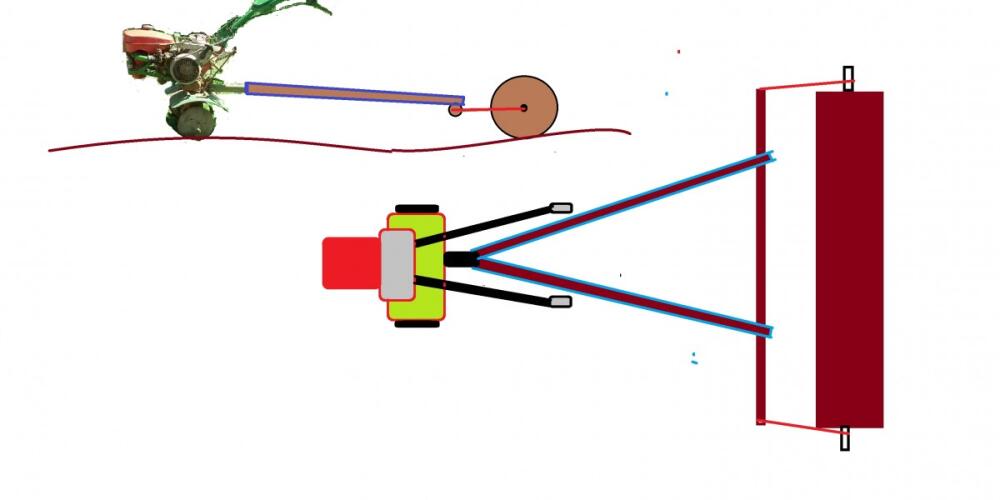
There are several ways to clear minefields. In peacetime, deminers do this work, first with machines that activate the minefield, and then manually checking whether any mines are left. If there are minefield maps then they can be taken out manually.
In war, the opponent's minefields are most often destroyed by special explosive devices that explode above the minefields and thus activate the mines below the explosion area.
All these procedures are expensive and often cost human lives.
Clearing minefields could be done much simpler and cheaper.
A pressure of several kilograms is sufficient to activate anti-personnel landmines, while the minimum pressure to activate an anti-armor mine can vary from 15 kilograms to several tens of kilograms. This pressure can be achieved using any thick wooden log that is pulled as a roller by some very cheap machine. This machine can be a small agricultural motor-cultivator (tiller), or it can also be an old car from a scrap car with all parts removed from the body except for the engine, wheels and steering wheel.
A thick log several meters long can be attached to a motor-cultivator or an old car with chains, and the movement of such a vehicle pulling the log behind it activates all the mines encountered by the log roller. If a car tire hits a mine, the vehicle will activate it and stop, but if the vehicle's wheels pass the mine, then the wooden roller will activate it. A thick log can activate a large number of anti-personnel mines, and continue to move, and will be destroyed only if it encounters an anti-armor mine.
When launching such a cheap disposable minesweeper towards the enemy, it is necessary to block the steering wheel so that the vehicle always goes in the same direction, and also to block the throttle on the towing vehicle. And the vehicle would start when the transmission is put into the lowest gear and the clutch is released.
By launching such a vehicle at night towards the enemy, multiple objectives would be achieved.
Routes would be made without minefields through which soldiers and vehicles can pass.
Panic would be caused in the opposing ranks, which would have to fully activate all resources to fight the attack.
Enemy fire would be attracted to such vehicles, revealing their positions and depleting their ammunition supplies.
Such vehicles would have an additional function if wooden or tin models of tanks were placed on them, which would attract land and air enemy anti-tank missile forces as bait. And every anti-tank missile fired from helicopters and planes costs more than a simple minefield sweeper like this.
A few hundred such vehicles released at night towards the enemy could break through several mine-free routes to the enemy's positions. After a few days of such successive false attacks on the enemy's positions, their ammunition stocks could be significantly reduced, and after that a real attack could be launched through the destroyed minefields. During the attack, the soldiers could move from one log to another that was destroyed in the minefield, and these thick logs would serve as a good cover. And when the enemy's mortar fire becomes very strong, small shelters can be dug very quickly under the logs, and new positions can be established there.
In such an attack, the number of dead soldiers could be reduced several times thanks to the destroyed minefields, and thanks to the existence of a large number of thick logs that serve as good cover.
Tags
Featured articles